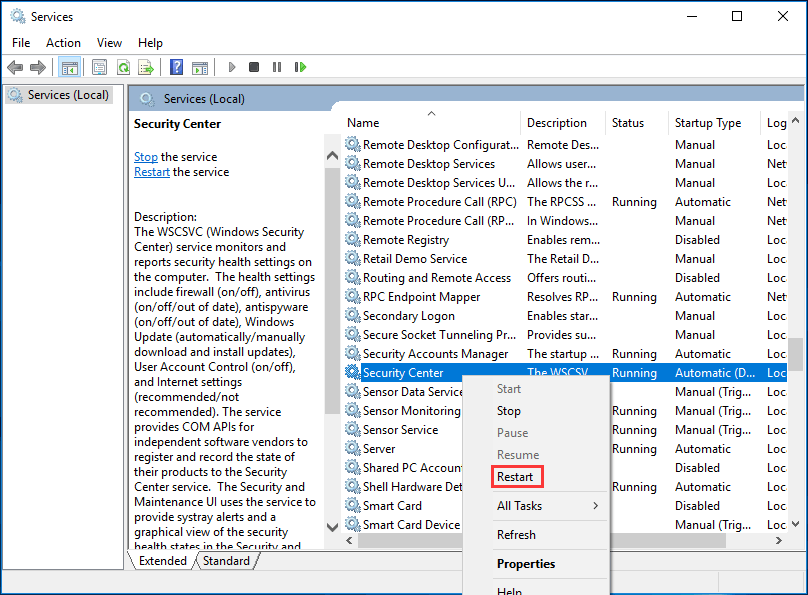

You can configure the display of additional notifications, such as recent threat detection summaries, in the Windows Security app and with Group Policy.ĭisabling additional notifications will not disable critical notifications, such as threat detection and remediation alerts. Configure antivirus notifications using Group Policy or the Windows Security app If you're part of your organization's security team, you can configure how notifications appear on endpoints, such as notifications that prompt for a system reboot or that indicate a threat has been detected and remediated. These notifications also appear in the Notification Center, and a summary of scans and threat detections appear at regular time intervals. Notifications follow both scheduled and manually triggered scans. Microsoft Defender Antivirus notifications appear on endpoints when scans are completed and threats are detected. Select “Virus & threat protection.” If you don’t see this option, select “Open Windows Security,” then select “Virus & threat protection.In Windows 10 and Windows 11, application notifications about malware detection and remediation are more robust, consistent, and concise.Go to “Start -> Settings -> Privacy & security -> Windows Security.”.Otherwise, any changes you make in the following sections will go away once you restart. This is a great feature that helps prevent another user or even a virus from disabling your built-in antivirus. Just follow the steps below, and you should have your problem fixed in no time.īefore you proceed with registry options, you have to disable Windows Defender Tamper Protection. If you don’t use any of the above editions, or aren’t sure which one you’re using, don’t worry! All versions of Windows 10 and Windows 11 can turn off Windows Defender using the registry method. Typically, the Local Group Policy solution is a little easier to perform, but you can only use it on Pro, Enterprise, and Education editions of Windows 10 and 11. For a more permanent solution, you can go through the registry or Local Group Policy window.

The first is the simplest: just install a third-party virus program on your PC to disable the Defender in part.You have a few options when it comes to disabling Windows Defender. Keep in mind that you’ll have to make sure you do not browse the Web without a functioning antivirus active! You need to have something installed beforehand to make up for Windows Defender being turned off. Disable Windows Defender Permanentlyįortunately, there are ways to make it so that Windows Defender doesn’t reenable itself. Note: if you’re already using another antivirus instead of Windows Defender, you may not see these settings at all – which is a fix in itself and will be detailed below.

This is great if you just need to turn Windows Defender off for a short while but doesn’t solve the ultimate goal of turning off Windows Defender permanently. Also, just as in Windows 10, turning everything off is just temporary.


 0 kommentar(er)
0 kommentar(er)
